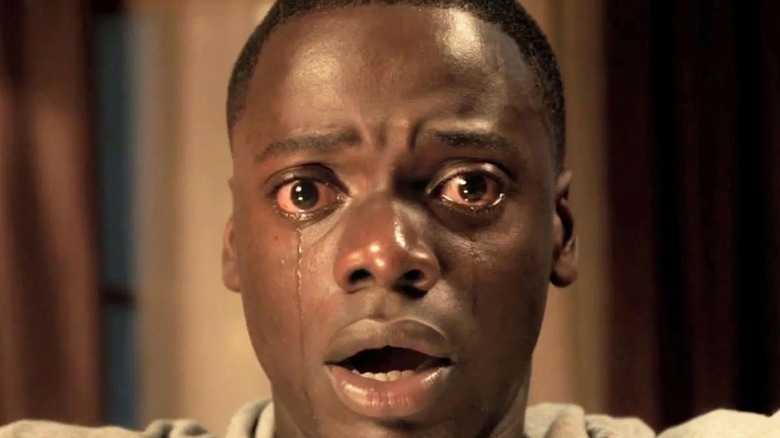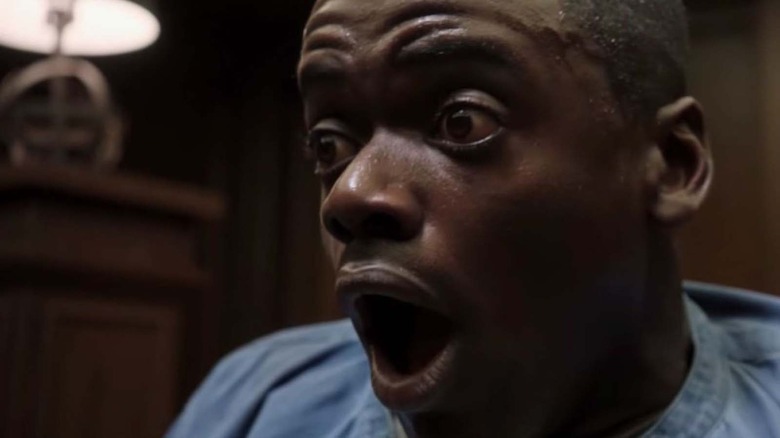Jordan Peele's Frightening Explanation For The Sunken Place
Thank god for the "Get Out" Blu-ray special features. Jordan Peele really did us all a solid and dropped some really great and horrifying knowledge about the ins and outs of his prolific film — including a really terrifying explanation for the diabolical Sunken Place.
"You know when you're about to fall asleep and you feel like you're falling, but you catch yourself and you wake up?" Peele said in the film's commentary track. "Well, what if you never caught yourself? Where would you fall? Where would you go into?"
In his eyes, every person experiences that place — the Sunken Place, which, for Daniel Kaluuya's Chris, is a deep black abyss — completely differently. Peele expanded on the concept:
"Just to blow your minds for one second, you know in my mind The Sunken Place is experienced differently for everyone else. It is a state of mind that is created by your own brain, based on Missy sort of latching onto your deepest fear or your darkest moment. So that Andre, the woman who is Georgina, or Walter all live in some sort of marginalized state where they can see through the eyes of their captor, but they can't do anything. But everyone's room in The Sunken Place would look different."
Naturally, we only have time to experience one version of this hellish existence in the film. But looking back on the other characters that the Armitage family brutally kidnapped and medically altered against their will, it really opens up a world of possibilities when it comes to what their respective Sunken Places look like. Cruel, evil, and unsettling possibilities, but possibilities nonetheless.
A metaphor for the experience of Black horror audiences
Peele also revealed in his commentary that the Sunken Place is his way of commenting on the Black horror audience experience.
"The Sunken Place, among other things, it is a metaphor for the marginalization of the Black horror movie audience. We are a loyal horror movie fanbase and we're relegated to the theater, not the screen. We don't have the representation of our skin in horror films, nor do we have representation of our sensibilities and our ability to observe trouble before it happens, and our ability to excuse ourselves."
He also noted that this concept has been discussed in Black art in different genres in the past. "It also, of course, conjures the Eddie Murphy routine where he's talking about 'The Amityville Horror,' and that a Black family would deal in that situation differently," the director noted. "One of the great comedy bits."
Ultimately, the goal was to highlight the full scope of oppression Black people face, particularly surrounding discussions on race. "This movie for me was an answer to the lack of representation," Peele added. "And [...] our lack of ability to talk about race, specifically the prison industrial system complex, and the disproportionate number of Black people, mostly men, who are literally abducted, thrown into a hole and tossed to the back of our minds, literally and figuratively, and The Sunken Place is a metaphor for that marginalization."
The layers, the nuance. There's a reason why "Get Out" continues to terrify and enthrall horror fans, and will continue to do so for many years' time — and it has everything to do with these extras that inform the story but aren't explicitly discussed. The Jordan Peele Cinematic Universe lore — and its bold alignment with real life — is strong, y'all.

